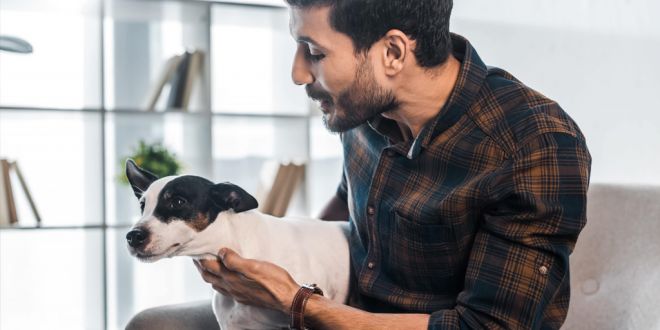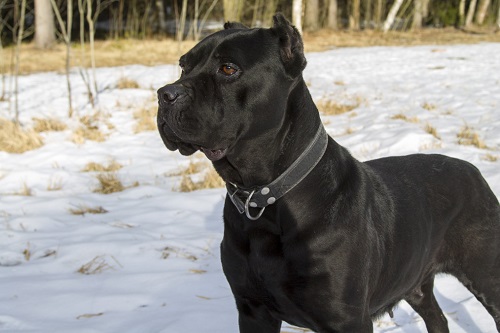Tips to help a relationship between your emotional support animal and partner
So, you’ve met someone new and very special. They’ve passed all the tests (so far) and now it’s time to introduce them to your beloved dog. You can’t wait! You know there’s no way your service dog or emotional support animal won’t adore your new love interest just as much as you do.
So you bring your new cutie home to meet your other cutie, Fido, and …your dog won’t stop barking, crying, growling, or even hiding from – and worse – biting your new partner.
What a disaster!! This is a nightmare situation that no pet owner wants to find themselves in, it can be quite heartbreaking and devastating.
You want your new partner to love and adore your service dog or emotional support dog just as much as you do and you want that love . . . and those wet, sloppy kisses and warm cuddles reciprocated.
This situation can be even worse if you do have an emotional support animal or service dog because chances are, the pup is going to be accompanying you on a lot of dates and it will be a rare occasion when your service dog isn’t by your side.
Not like you would ever give your precious pup away, but if you have a service dog, that option most likely isn’t even on the table as a possibility. Don’t worry, we have a few tips on what to do if your service dog or emotional support animal hates your new partner.
Feeding Time: The way to a dog’s heart is through its stomach, right? One easy way to get your service dog to stop seeing red when they see your new partner is to have him/her feed Fido.
Play Time: Another way to convince your emotional support animal that your new beau isn’t so bad is to carve out some playtime between the two.
Maybe your partner can bring a new toy for your dog to chew on and play with. What matters most is the two get some bonding time. They can play in the living room, go on a walk or hike, or go to the dog park together.
A Walk in the Park: Long walks with Fido are a great way to forge a bond. To start out you can accompany your service dog and your new partner.
But after a time or two together, let the two go at it alone. If your partner can take your pup on one long walk per week, they should be bonded in no time.
It will also help that the more walks they go on, the more likely it is that when your emotional support animal sees your partner, he will associate him/her with a walk and be happy to see them.
Also, when your partner takes your dog out, the service dog will feel less threatened by a stranger being in their house. A natural, outdoor setting will make your new partner appear less threatening and overbearing in Fido’s eyes.
Tricks for Treat: We already talked about having your partner feed your service dog to loosen up your pup’s harsh feelings towards them. Here’s another idea. Have your new partner teach your service dog new treats and reward the pup with delicious treats.
These treats should be better than the biscuits he gets thrown daily. So maybe it’s peanut butter, cheese, hot dogs, a special dog ice cream or biscuit or anything that holds high value and yumminess in your service dog’s eye . . . and stomach.

Adobe Stock #192338958
Of course, have your partner use small pieces of the treats since they will be giving them frequently. We don’t want your service dog to get a weight problem at the expense of your new partner! Start by having your partner toss the treats in your pup’s direction.
After a few days of that, when it seems the dog is warming up to your partner, you can try to have them give your service dog the treat directly. While new tricks are fun, you can also have Fido do tricks they have already mastered for a treat.
For instance, have them sit down or lie down, and then your partner gives them a treat. This will be less intimidating for both parties since the dog has already mastered the trick, a treat is almost a guarantee.
Don’t Force it: This is an important tip because we know how extremely important it is for your dog to accept your new partner. You may be willing to do anything to get your service dog to approve. But it’s vital that you allow your dog to build trust on his own. Let Fido dictate the pace of the new relationship.
If he stops playing with your new partner, then the game is over. Let it go and pick it up later rather than trying to force your emotional support animal to do something he really doesn’t want to do. If your service dog barks at your new partner, don’t punish the dog for barking.
Instead, when barked at, have your partner turn away and ignore your service dog. You can remove your dog from the room and put him in a crate elsewhere if he continues to bark at your partner.
Petting Problems: If your dog is growling, biting, and getting scared when your S.O. pets them, work with words. For example, say “pet” and then stroke your pup. Then, have your partner say “pet” and stroke her.
Hearing familiar words will make your emotional support animal more likely to respond favorably. Just as if a human wouldn’t enjoy being touched by a stranger out of nowhere, the concept is the same for Fido.
Your dog could very well be jealous of this new relationship of yours. So, when your dog is present, do your best to make them feel included. When they feel included, they will see your partner as less of a threat who is taking your attention from them away.
So, instead of cuddling on the couch with your partner on movie night, try to move to the floor so you two can lie with Fido for a while.
What if it’s vice-versa and my partner hates my emotional support animal or service dog?
If this is the case, you might as well just tell your partner to hit the road. Just kidding, kind of. If your partner is the problem you need to take the same approach and warm them up slowly to your dog. Start by showing your S.O. cute pictures and videos of your pup.
This way you can show all of the best parts of your service dog to your partner. When you’re ready to introduce your partner to your pup, do it at a time of day when your dog will be calm. So make sure they are fed and have gone potty so they will be satisfied and relaxed when meeting your partner.
Try going for a walk with your service dog and partner. Let your partner pet your pup and have them take slow steps to get to know one another. In the beginning, keep your dog in your arms or on a leash so your partner isn’t worried about the dog jumping on them. Eventually, your pup’s charm and cuteness will take over and the two will form a lasting bond.
To get your emotional support animal or service dog really warmed up to your new honey, all fun and deliciousness are going to need to come solely from them for a while. Now, we understand if you have a service dog that may not be possible.
That’s okay, just make sure most of the fun and deliciousness is coming from your new partner until your pooch has the same warm and fuzzy feelings towards them as you do. It can be hard to suddenly feel as if you’re the third wheel in the new relationship between your service dog and partner but hang in there, it won’t last forever.
As soon as the pup is happy and approving of your new beau, things can go back to normal and you can go back to being your service dog’s #1.
Give the new budding relationship between pup and your new partner some time, be patient, keep trying and have fun and things should be smoothed over in no time.
To reduce the anxiety your service dog may have around your partner, it’s important to identify the triggers that are causing the pup to act anxious. Be observant, does your dog avoid your partner only when they’re wearing a hat?
If so, have them take the hat off when they’re around your pup and see how your dog’s behavior changes. These small observations and changes can make all the difference in creating a happy relationship between your service dog and your new partner.
We know how important the bond between your service dog and your partner is. So, if you try all of the above tips and it’s not helping or worse, your service dog’s behavior towards your partner is worsening and the dog is biting, contact your veterinarian. The vet should have tips for you or be able to refer you to a professional dog trainer or dog behaviorist.
 DogExpress
DogExpress




















 in Chandigarh, India.
in Chandigarh, India. 

